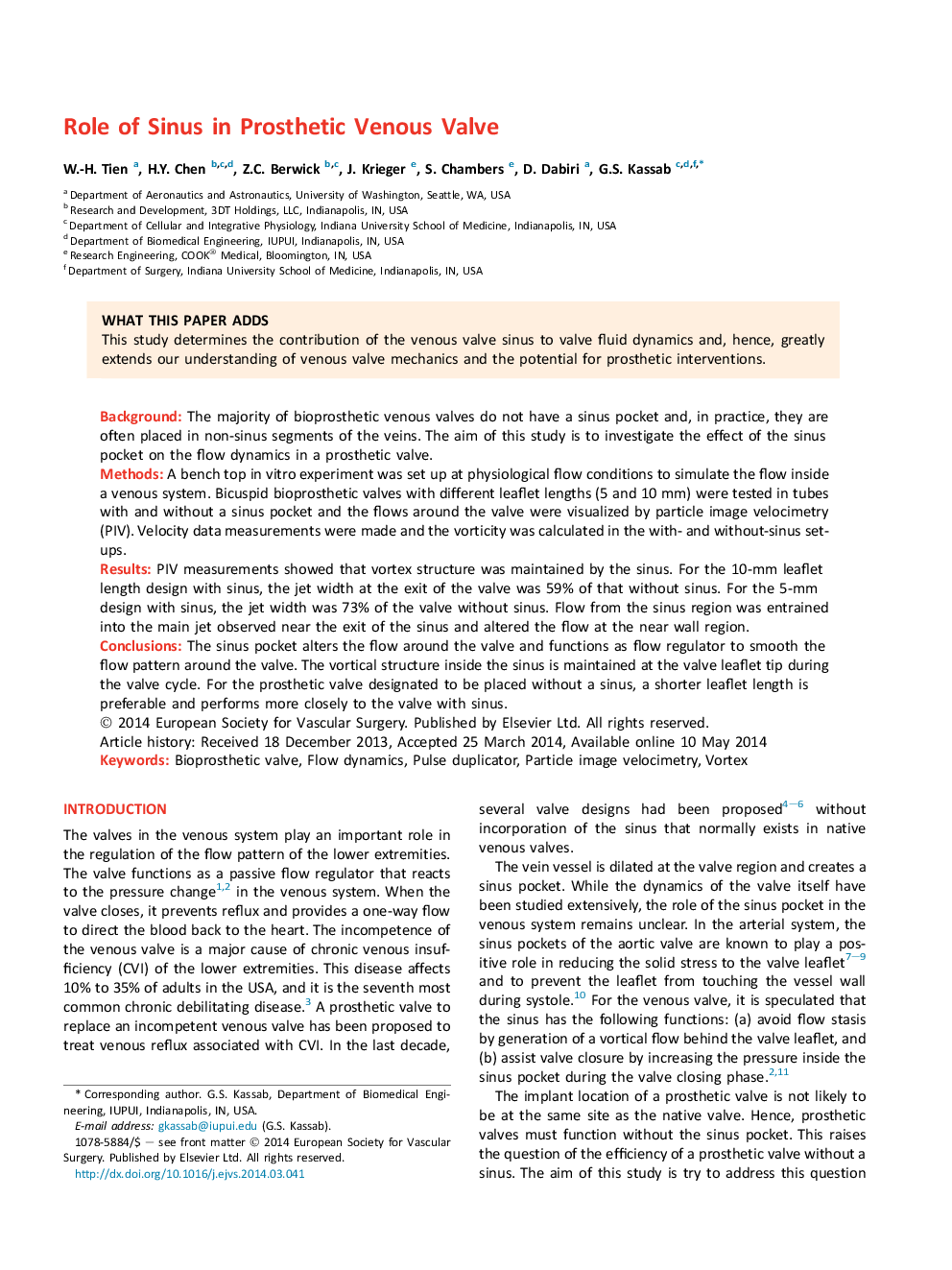| Article ID | Journal | Published Year | Pages | File Type |
|---|---|---|---|---|
| 5957902 | European Journal of Vascular and Endovascular Surgery | 2014 | 7 Pages |
BackgroundThe majority of bioprosthetic venous valves do not have a sinus pocket and, in practice, they are often placed in non-sinus segments of the veins. The aim of this study is to investigate the effect of the sinus pocket on the flow dynamics in a prosthetic valve.MethodsA bench top in vitro experiment was set up at physiological flow conditions to simulate the flow inside a venous system. Bicuspid bioprosthetic valves with different leaflet lengths (5 and 10 mm) were tested in tubes with and without a sinus pocket and the flows around the valve were visualized by particle image velocimetry (PIV). Velocity data measurements were made and the vorticity was calculated in the with- and without-sinus set-ups.ResultsPIV measurements showed that vortex structure was maintained by the sinus. For the 10-mm leaflet length design with sinus, the jet width at the exit of the valve was 59% of that without sinus. For the 5-mm design with sinus, the jet width was 73% of the valve without sinus. Flow from the sinus region was entrained into the main jet observed near the exit of the sinus and altered the flow at the near wall region.ConclusionsThe sinus pocket alters the flow around the valve and functions as flow regulator to smooth the flow pattern around the valve. The vortical structure inside the sinus is maintained at the valve leaflet tip during the valve cycle. For the prosthetic valve designated to be placed without a sinus, a shorter leaflet length is preferable and performs more closely to the valve with sinus.
